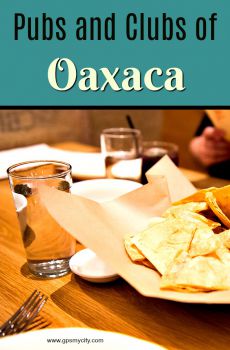Monte Alban Archaeological Site, Oaxaca
Perched atop a leveled ridge some 1,940 meters above sea level and rising about 400 meters above the Valley of Oaxaca floor, Monte Albán is a masterpiece of human engineering and strategic planning. The site occupies a defensible platform where the valley’s north, east, and south branches converge.
Beyond its monumental plaza and temple complexes, Monte Albán is distinguished by hundreds of artificial terraces and a dozen clusters of mounded architecture that spill down the surrounding slopes. The entire ridge-including nearby Atzompa and El Gallo hills-is part of an ancient urban footprint carved from the mountain itself.
Founded around 500 BCE during the Late Formative period, Monte Albán became the pre-eminent capital of the Zapotec civilization by 100 BCE–200 CE, extending its influence across the Oaxacan highlands and trading with distant centers such as Teotihuacan. For nearly a millennium, it served as a political, economic, and ceremonial hub before its decline around 800 CE, when it was largely abandoned.
The archaeological record-pyramids, a ball court, richly carved tombs, and the haunting “Danzantes” bas-reliefs depicting sacrificed prisoners-offers a vivid window into Mesoamerican art and ritual.
Recognized as a UNESCO World Heritage Site in 1987 and featured on the 2008 World Monuments Watch, Monte Albán remains one of Mexico’s most important archaeological zones, its panoramic 360° views and enduring stone monuments a testament to the ingenuity of its builders.
Beyond its monumental plaza and temple complexes, Monte Albán is distinguished by hundreds of artificial terraces and a dozen clusters of mounded architecture that spill down the surrounding slopes. The entire ridge-including nearby Atzompa and El Gallo hills-is part of an ancient urban footprint carved from the mountain itself.
Founded around 500 BCE during the Late Formative period, Monte Albán became the pre-eminent capital of the Zapotec civilization by 100 BCE–200 CE, extending its influence across the Oaxacan highlands and trading with distant centers such as Teotihuacan. For nearly a millennium, it served as a political, economic, and ceremonial hub before its decline around 800 CE, when it was largely abandoned.
The archaeological record-pyramids, a ball court, richly carved tombs, and the haunting “Danzantes” bas-reliefs depicting sacrificed prisoners-offers a vivid window into Mesoamerican art and ritual.
Recognized as a UNESCO World Heritage Site in 1987 and featured on the 2008 World Monuments Watch, Monte Albán remains one of Mexico’s most important archaeological zones, its panoramic 360° views and enduring stone monuments a testament to the ingenuity of its builders.
Want to visit this sight? Check out these Self-Guided Walking Tours in Oaxaca. Alternatively, you can download the mobile app "GPSmyCity: Walks in 1K+ Cities" from Apple App Store or Google Play Store. The app turns your mobile device to a personal tour guide and it works offline, so no data plan is needed when traveling abroad.
Monte Alban Archaeological Site on Map
Sight Name: Monte Alban Archaeological Site
Sight Location: Oaxaca, Mexico (See walking tours in Oaxaca)
Sight Type: Attraction/Landmark
Sight Location: Oaxaca, Mexico (See walking tours in Oaxaca)
Sight Type: Attraction/Landmark
Walking Tours in Oaxaca, Mexico
Create Your Own Walk in Oaxaca
Creating your own self-guided walk in Oaxaca is easy and fun. Choose the city attractions that you want to see and a walk route map will be created just for you. You can even set your hotel as the start point of the walk.
Oaxaca Introduction Walking Tour
If cities could dance, Oaxaca would move to a slow, graceful rhythm-equal parts ancient pulse and everyday joy. Officially called Oaxaca de Juárez, this southern Mexican capital is where cultures don’t just meet-they throw a fiesta. You’ll find indigenous roots running deep, wrapped in colonial charm and topped with some of the best mole sauce you’ll ever taste.
Long before the Spanish... view more
Tour Duration: 2 Hour(s)
Travel Distance: 3.4 Km or 2.1 Miles
Long before the Spanish... view more
Tour Duration: 2 Hour(s)
Travel Distance: 3.4 Km or 2.1 Miles
Useful Travel Guides for Planning Your Trip
Pubs and Clubs of Oaxaca
Oaxaca is a very artistic city, full of musicians and artists trying to get their revolutionary message out. It has a few salsa joints but Oaxaquenos would rather be heard. There are some fantastic funky little pubs that have live music or even at times poetry readings. Later on in the night you can...
A Taste of Oaxaca
Mexican food is world famous but what most people do not know is most of that distinctly Mexican food comes from Oaxaca. Many famous chefs come to this city to study the art of Mexican cuisine, including top chef Susana Trilling who now calls Oaxaca her home. This tour highlights the best Oaxaca has...






